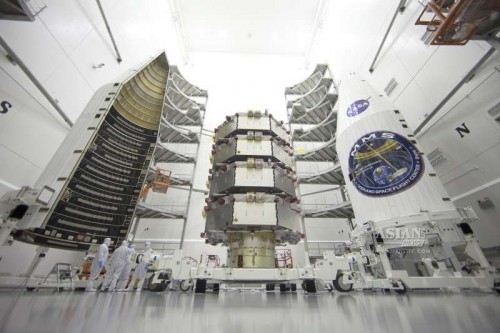
The US space agency is set for the launch of Magnetospheric Multiscale (MMS) spacecraft March 12, the first space mission dedicated to the study of magnetic reconnection.
This fundamental process occurs throughout the universe where magnetic fields connect and disconnect with an explosive release of energy, a NASA statement said.
“Magnetic reconnection is one of the most important drivers of space weather events,” said Jeff Newmark, interim director of the Heliophysics Division at NASA Headquarters in Washington, DC.
Eruptive solar flares, coronal mass ejections and geomagnetic storms all involve the release, through reconnection of energy stored in magnetic fields.
“Space weather events can affect modern technological systems such as communications networks, GPS navigation and electrical power grids,” he informed.
The spacecraft will begin science operations in September. Unlike previous missions to observe the evidence of magnetic reconnection events, MMS will have sufficient resolution to measure the characteristics of ongoing reconnection events as they occur.
The mission consists of four identical space observatories that will provide the first 3D view of magnetic reconnection.
Because the observatories will fly through reconnection regions in a tight formation, in less than a second, key sensors on each spacecraft are designed to measure the space environment at rates faster than any previous mission.
The mission observes reconnection directly in Earth’s protective magnetic space environment known as the magnetosphere. By studying reconnection in this natural laboratory, MMS will help scientists understand reconnection elsewhere, such as the atmosphere of the Sun, the vicinity of black holes, neutron stars and the boundary between our solar system and interstellar space.
The launch of MMS on a United Launch Alliance Atlas V rocket will be managed by the Launch Services Programme at NASA’s Kennedy Space Centre in Florida.